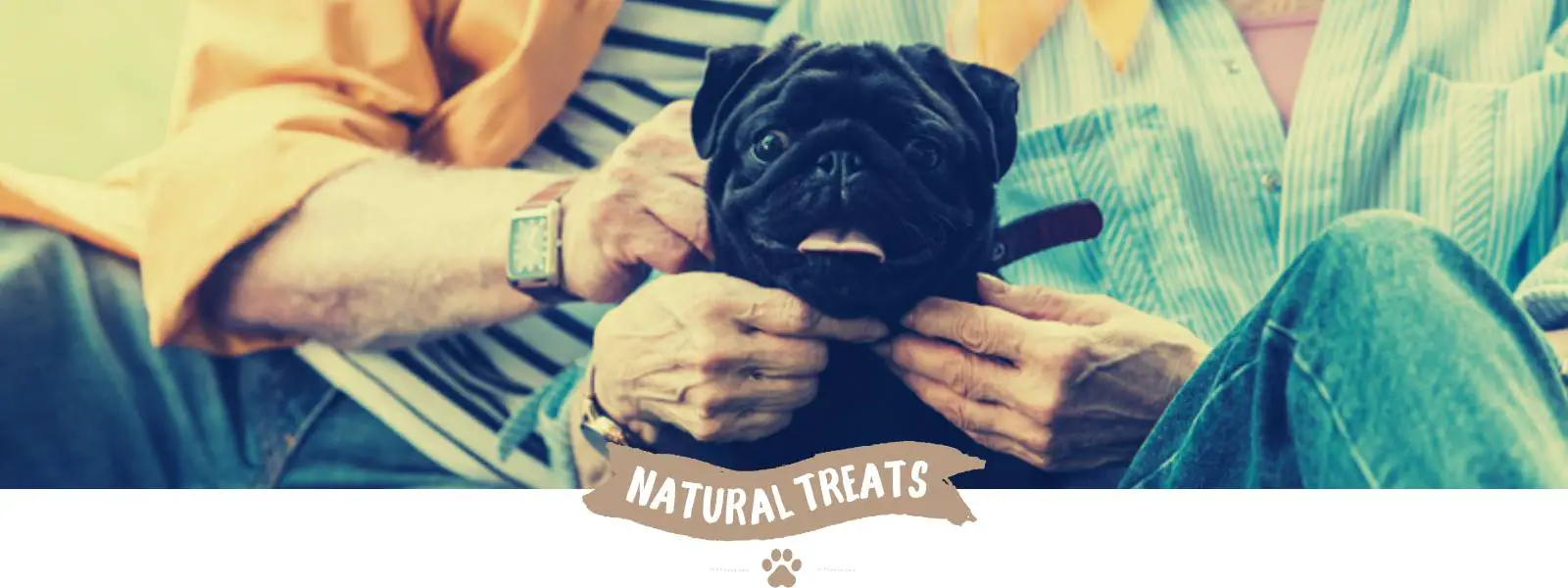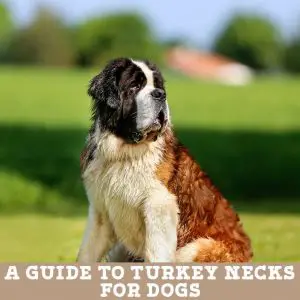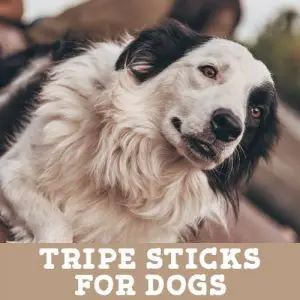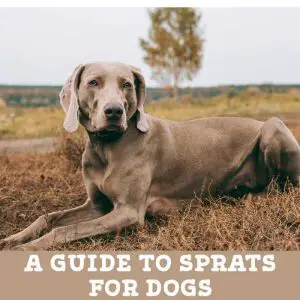
A lower fat alternative to the popular pig’s ears — just what are lamb ears for dogs? Are they safe? Healthy?
This article will cover your most frequently asked questions, including the benefits and risks of feeding lamb ears, to help you decide if they’re right for your dog.
Key facts
Lamb ears are a by-product of the sheep meat industry so look out for free-range products with animal welfare credentials (RSPCA, Scottish Organic Producers Association, Red Tractor, Soil Association).
Lamb Ears encourage chewing which is important for mental stimulation and may also help with dental health.
Lamb Ears are moderate to high in calories and should be fed as an occasional treat.
There are several risks to be aware of when feeding Lamb Ears including bacterial contamination, intestinal blockages, diarrhoea, and choking.
Alternatives to lamb ears are VOHC accepted dental chews, bully sticks, and cow ears.
What Are Lamb Ears?
As the name suggests, these natural chews for dogs are made from an entire lamb’s ear that has been slowly dried or dehydrated. Lamb ears are mostly comprised of skin and cartilage, with no bones, though certain products are sold with fur (hair) still attached to the skin.
Lamb ears typically don’t contain preservatives or additional ingredients other than 100% lamb, however, it’s always best to check the ingredients list and processing method before purchasing. They are smaller chewable treats, averaging around 10cm in length and are best suited for smaller breed dogs.
Provenance
Lamb ears are considered by-products of sheepmeat processing rather than meat intended for human consumption. Though this is excellent in terms of sustainability and ensuring animal products do not go to waste, it’s still very important to consider welfare practices for sheep farming. Try to look out for lamb products from free-range farms with animal welfare accreditations such as Red Tractor, Scottish Organic Producers Association, RSPCA Freedom Food, and the Soil Association.
The major producers of lamb and sheep meat products in Europe are the UK, Spain, France, Romania, Ireland and Italy. When purchasing dried lamb ears online you will also notice products available from countries like Australia and New Zealand. Try to source lamb ears from a local manufacturer where possible, and keep in mind that hygiene and food safety standards will vary between countries of origin.
Preparation
Lamb ears for dogs are dehydrated chewable treats. Typically they are made by boiling the ear to remove the fur before being slowly dehydrated either by air-drying or slow baking. Some lamb ear products are smoked to improve flavour, however, there is some concern that chemicals produced during this process may be carcinogenic to humans. There are currently no available studies to support or disprove this in dogs.
Dehydrated lamb ear treats will vary slightly in appearance depending on how they have been processed. They all resemble a long sheep’s ear in shape but can range from white and crunchy in texture, to darker brown, or even covered in fur if this has been left in place.
Raw Feeding Box
raw feeding lambs ears
Did you know?
Pet owners that feed raw may choose to include lamb ears as a treat or as part of a balanced diet. This article is designed to discuss the pros and cons of feeding a natural treat rather than raw feeding in-depth. However, it is worth mentioning that any raw meat product, including dehydrated treats like lamb and pigs ears, carry the risk of contamination with harmful bacteria such as Salmonella, Campylobacter, and Listeria.
Though this infrequently makes dogs unwell, it can cause severe illness in humans, especially young children, the elderly and those that are immunocompromised. In 2019, over 150 people in the US became infected with Salmonella after feeding contaminated pig ear treats to their dogs. If choosing to feed raw, careful hygiene practices are crucial so be sure to wash your hands and disinfect surfaces after handling these products.
Benefits of Lamb Ears for Dogs
Key benefits
Dental Health
Encourage chewing and may help reduce plaque and tartar.
Mental Enrichment
Chewing provides mental stimulation and may help relieve stress.
Single Protein
Contains 100% lamb and may be suitable for dogs with food allergies.
Dental Health
One of the most common reasons pet owners choose to feed lamb ears is to help keep their pup’s teeth clean naturally. Mechanically it makes sense that the act of chewing a hard object could help remove plaque and tartar, however, there currently isn’t any research to demonstrate the effectiveness of lamb ears at present.
These effects would also be greatly reduced if your pup swallows their treat quickly, rather than spends time chewing it slowly. So whilst lamb ears may be of some benefit, they shouldn’t replace regular dental health checks and gold standard practices like daily tooth brushing.
Mental Enrichment
Chewing is an important behaviour, not just for your dog’s health but also because it’s fun and helps keep them entertained! Providing an appropriate item for your dog to chew on also can also help reduce boredom, relieve stress, and keeps them away from your shoes! So how long does a lamb ear last? The answer is it varies. These treats may keep a small breed dog busy for hours, but a speedy chewer can demolish them in 10-15 minutes or less!
Alternative Protein
Dogs that suffer from food allergies or sensitivities may be recommended a hypoallergenic diet by their veterinarian. These diets often contain ‘novel’ proteins like lamb, venison, or fish if your dog is allergic to more traditional pet food ingredients like beef or chicken. In these cases, lamb ears may be a suitable treat, just be sure to check with your vet first.
Lamb ears will not be appropriate for all dogs with allergies, as some will be allergic to sheep products or to more than one protein. It’s also important to note that skin allergies are also commonly caused by environmental triggers (atopic dermatitis) and a veterinarian is required to make a diagnosis of the underlying cause.
Natural Dewormer
Many lamb ears chews with the hair still attached claim to function as a natural dewormer, stating that the indigestible fur helps to remove intestinal worms from the dog’s gut.
There is no current research to support this claim and it is extremely unlikely that this method would effectively remove every intestinal worm present within the gut. Therefore, lamb ears should never be used to replace regular effective worming treatments as recommended by a veterinarian.
Nutritional Information for Lamb Ears
Nutrition
Nutritional analysis will vary between products, individual batches, and will depend on the preserving method used.
* Many lamb ear products claimed to be low in fat with a guaranteed nutritional analysis under 5% fat, however, it’s worth noting that others reported a min 22% fat, so caution should be taken when feeding lamb ears of different brands to pets with digestive issues, including pancreatitis.
Low in Fat
Most of the lamb ear treats available from online retailers reported low levels of fat, which can be useful for dogs with pancreatitis or other gastrointestinal problems. However, the amount varied greatly between products, with many treats claiming a guaranteed analysis of well under 5% fat, and others a minimum of 22% (high fat). If your dog requires a low-fat treat option, make sure to check the nutritional information before purchasing, and always discuss adding new foods into their diet with your vet first.
High in Protein
Lamb ears contain high levels of protein, which plays many important roles in a healthy body including muscle development and the production of hormones and enzymes. Whilst most healthy dogs may benefit from protein-rich foods, they should be avoided in dogs with liver or kidney disease.
Medium – High
Lamb ears are considered medium to high in calories, depending on the product. A single ear can vary from 26-92 calories per piece. For reference, 90 calories is around 20% of the recommended daily calorie intake for a 15lb dog.
Feeding Guide
Lamb ears are best given as an occasional treat due to their higher calorie content to help prevent excess weight gain. One lamb ear twice a week is plenty for a small breed dog. These treats are best avoided in overweight dogs and should only be given to dogs with underlying health issues if your vet has approved them. Lamb ears should never replace a complete and balanced diet.
Downsides & Risks of Lamb Ears for Dogs
Practice Good Hygiene
Lamb ears just like any other chewable treats have their downsides. Risks to be aware of when deciding to feed lamb ears include diarrhoea, gastrointestinal obstruction and choking. Lamb ears also carry the risk of bacterial contamination, like any other raw meat product, so safe hygiene practices are crucial when feeding these treats to pets.
Choking
It’s important to be aware that lamb ears are a potential choking hazard and your dog must be closely supervised when feeding. Though many dogs will chew up lamb ears safely into small pieces, those that gulp large pieces or try to swallow them whole may risk a piece getting lodged in the oesophagus.
Pieces of lamb ear can also get stuck at the back of the throat or enter the trachea (airway). This is an emergency requiring urgent veterinary intervention as your dog will struggle to breathe. By choosing an appropriately sized chew for your pup, you can help reduce the risk of choking by making sure it’s big enough so that it can’t be swallowed whole.
Lamb ears are not therefore recommended for large and giant breed dogs and are better suited to smaller breeds.
Gastrointestinal Obstruction
If large pieces of lamb ear are swallowed, there is a possibility of an intestinal obstruction (blockage) forming if the piece is too large to pass through the gut. An obstruction is life-threatening if left untreated and requires urgent surgical removal.
Signs of an obstruction include vomiting, loss of appetite, lethargy, diarrhoea, abdominal pain, and struggling to pass faeces.
For this reason, these treats are best avoided in dogs that try to gulp down or swallow these treats whole instead of chewing them into small pieces.
Diarrhoea
Like introducing any new treat, lamb ears may trigger diarrhoea in some dogs especially if they eat too many. Most dogs seem to tolerate them well but just like any food, some dogs will be sensitive and they should be avoided if causing regular tummy upsets.
Bacterial Contamination
Any raw meat product, including those that have been dehydrated, risks contamination with harmful bacteria including Salmonella, Listeria and E.coli. Whilst most healthy dogs don’t seem to show signs of illness, death from Salmonella infection associated with raw feeding has been reported in cats.
Bacterial contamination is also significant because of its potential to cause severe illness in people, especially young children, the elderly, and immunocompromised.
If your family is considered high-risk or your pup has a compromised immune system (e.g. receiving chemotherapy), it might be best to look for other alternatives. Otherwise, be sure to follow strict food hygiene practices including washing your hands regularly after handling treats and close interactions with your dog.
Avoid If…
- Your dog is overweight as lamb ears can range from medium to high in calories. If you think your dog may be overweight, your veterinarian will be able to advise you on a suitable weight loss plan.
- Your dog has an underlying illness or is currently receiving chemotherapy unless your veterinarian has advised otherwise.
- Your dog has an allergy or sensitivity to lamb (sheep) products.
Lamb Ears for Puppies
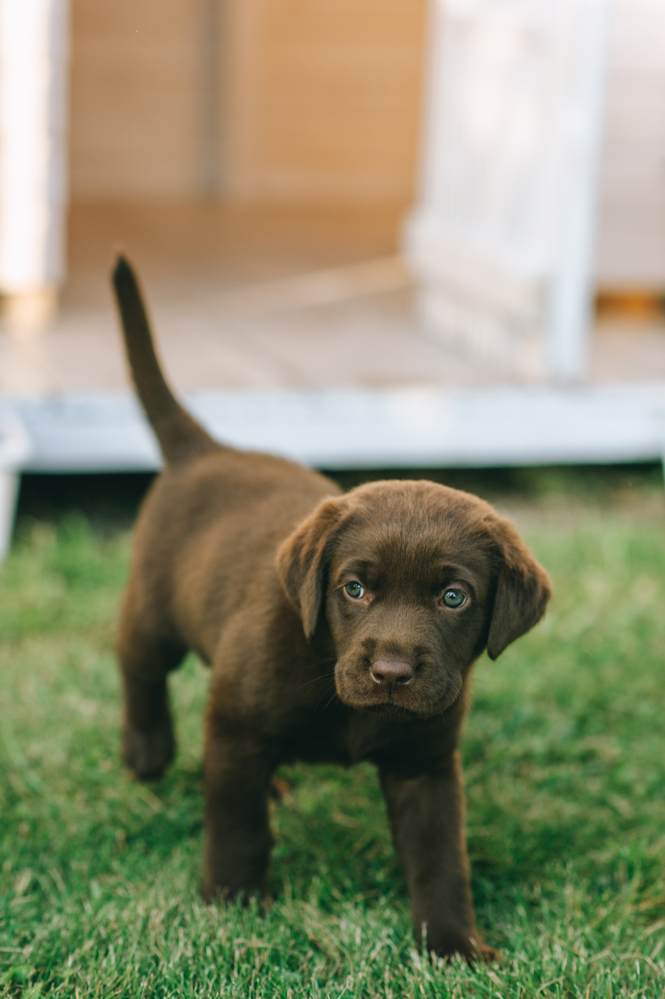
Most manufacturers list lamb ears as safe for puppies from 10-14 weeks, but as a higher calorie treat they should only be given occasionally – around once a fortnight. Lamb ears are excellent for keeping pups entertained and providing something to chew on that isn’t your furniture! Depending on the size of your pup, the lamb ear may need to be broken in half before feeding but be careful of sharp edges. Always supervise your puppy closely when feeding lamb ears or any other chewable treat.
Alternatives to Lamb Ears
- Cow’s ears: These have similar benefits to lamb ears but are suitable for larger breed dogs.
- Dental chews: The Veterinary Oral Health Council (VHOC) has an accepted list of products that have been proven to reduce plaque and tartar. Most of these products are traditional commercial dental chews that are less smelly and messy than natural bone and meat products.
- Bully sticks: An excellent source of enrichment and stimulation for your pup, providing plenty of chewing time. Just be warned they are high in calories and should be fed only occasionally.
FAQs
Lamb ears encourage chewing which provides entertainment and mental stimulation for dogs. It may also help with dental health. However, they are moderate to high in calories and carry certain health risks worth noting, including the potential to cause an obstruction and as a choking hazard.
Like any natural or raw meat product, feeding lamb ears is controversial amongst vets and pet owners alike regarding safety and benefits. Possible risks associated with lamb ears include bacterial contamination, choking, intestinal obstruction, and diarrhoea. Always supervise your dog closely when feeding lamb ears.
Most manufacturers list that their lamb ears are safe for puppies from 10-14 weeks of age, but they must always be supervised closely.
Yes, lamb ears are a potential choking hazard and dogs always should be supervised closely during feeding. They are better suited to small breed dogs that are unable to swallow them whole.
Most dogs enjoy lamb ears, however, just like us dogs also have food preferences and some of them will turn up their nose.
Most natural meat products do have an odour but lamb ears are reported by most pet owners and retailers to be mild or minimal. However, as raw meat products carry the risk of bacterial contamination, any surfaces should be cleaned carefully after contact, making them less ideal to feed inside the home.

